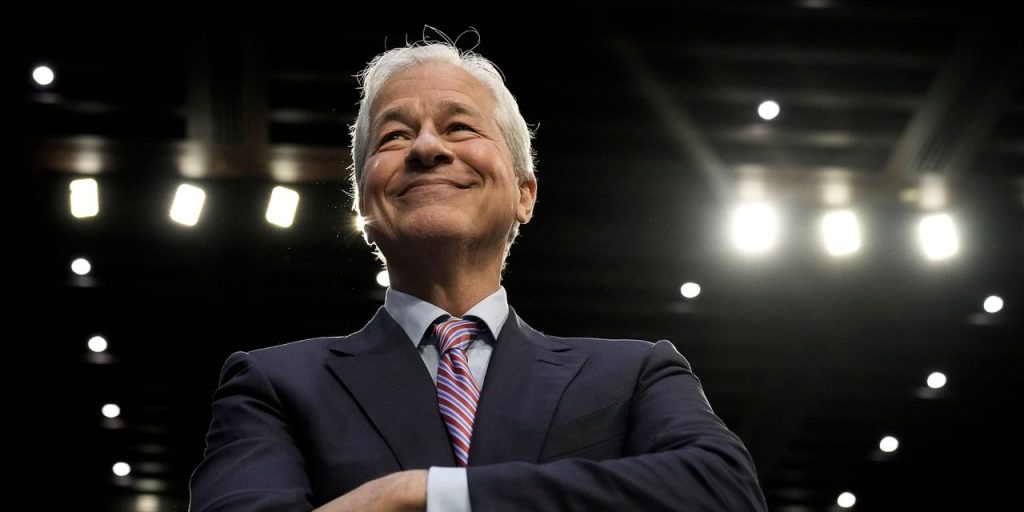With the best-case scenario for bank stocks this earnings season being the proverbial “better than feared,” investors may want to ponder what the industry will look like in the future to find today’s opportunities. Here’s a hint: Expect a wave of consolidation after there’s a bit more distance from last month’s collapse of Silicon Valley Bank and Signature Bank.
It’s long been said that the U.S. is overbanked compared with the rest of the world. We lead with 4,135 banking institutions, according to the Federal Deposit Insurance Corp. The United Kingdom comes in a distant second with 311, and the remainder of the top 25 countries have between 64 and 251 banks. Even on a per capita basis, the U.S. stands near the top, with 12.8 banks per million people, lagging only financial megacenters such as Luxembourg, Switzerland, Singapore, and Hong Kong.
While banking consolidation has been a decadeslong trend in the U.S.—there were 14,434 U.S. banks in 1980—Wall Street expects that the pace of mergers will soon accelerate as the costs of running a small bank are expected to soar thanks to the likelihood of more regulation.
“Banks are a commoditized product. It’s a cost game,” Mark Fitzgibbon, a research head at
Piper Sandler,
tells Barron’s. “With the overlay of the cost of regulation, there is downward pressure on profitability.”
Since the failure of Silicon Valley Bank and Signature Bank, everyone from Wall Street to Washington has wondered if greater regulatory scrutiny—similar to what
JPMorgan Chase
(ticker: JPM) and
Bank of America
(BAC) have to endure—would have prevented the smaller banks’ demise.
In his annual letter to shareholders this past week, JPMorgan CEO Jamie Dimon said he expects “some changes to the regulatory system,” while saying “knee-jerk,” “politically motivated” responses should be avoided. Sen. Elizabeth Warren (D., Mass.) has pushed for more regulation, including reversing a bill from the Trump administration that lowered the oversight for medium-size banks. In an interview with CNBC, she said that banks should be “boring.”
For investors, boring means less profits, which is why smaller banks will likely band together in hopes that greater scale will mitigate the costs of higher capital requirements and dealing with other regulations. For now, Fitzgibbon expects that bank merger activity will be tepid, as banks will want to make sure that their own houses are in order before acquiring others. Any mergers that do happen over the next few months will likely be situations of distress, such as New York Community Bancorp’s (NYCB) and
First Citizens Bancshares
’ (FCNCA) respective acquisitions of Signature and SVB.
While the typical investor playbook for M&A leads investors to seek likely targets, Fitzgibbon suggests a “buy the good buyers” approach. With the
SPDR S&P Regional Banking
exchange-traded fund (KRE) down 27% this year, many banks are looking like bargains, making it difficult to distinguish which ones are likely takeover targets. Instead, it makes sense to look at banks that have a good track record with their previous acquisitions and balance sheets that will allow them to be flexible in this environment.
Fitzgibbon and his team like
M&T Bank
(
MTB
), New York Community,
Old National Bancorp
(ONB),
Prosperity Bancshares
(PB), and
Truist Financial
(TFC). All have outperformed the index—and trade well above tangible book value—and offer dividend yields in excess of 3.5%.
If the prospect of consolidation years from now isn’t enticing enough for investors, they should pay close attention to earnings season, which starts on April 14 with JPMorgan,
Wells Fargo
(WFC) and
Citigroup
(C) and continues later this month with regionals like
Western Alliance Bancorp
(WAL) and
Regions Financial
(RF). This quarter, it will be the health of the banks’ balance sheets and not their bottom line that will be getting Wall Street’s attention.
Analysts at Keefe, Bruyette & Woods are taking an average 8% haircut to earnings forecasts for 2023 and 11% for 2024, expecting to see narrowing net interest margins along with higher expenses and fewer buybacks as banks hold on to capital.
But even with lowered forecasts, some analysts are of the mind that many of the sector’s weaknesses are already priced in and the risk/reward for many banks actually looks favorable.
“Sentiment in recent weeks has been abysmal, and market participants seem to be pricing in permanent profitability destruction, which we think is unlikely,” wrote Baird analyst David George.
If true, it could be a good time for investors and acquirers alike.
Write to Carleton English at carleton.english@dowjones.com
Read the full article here




